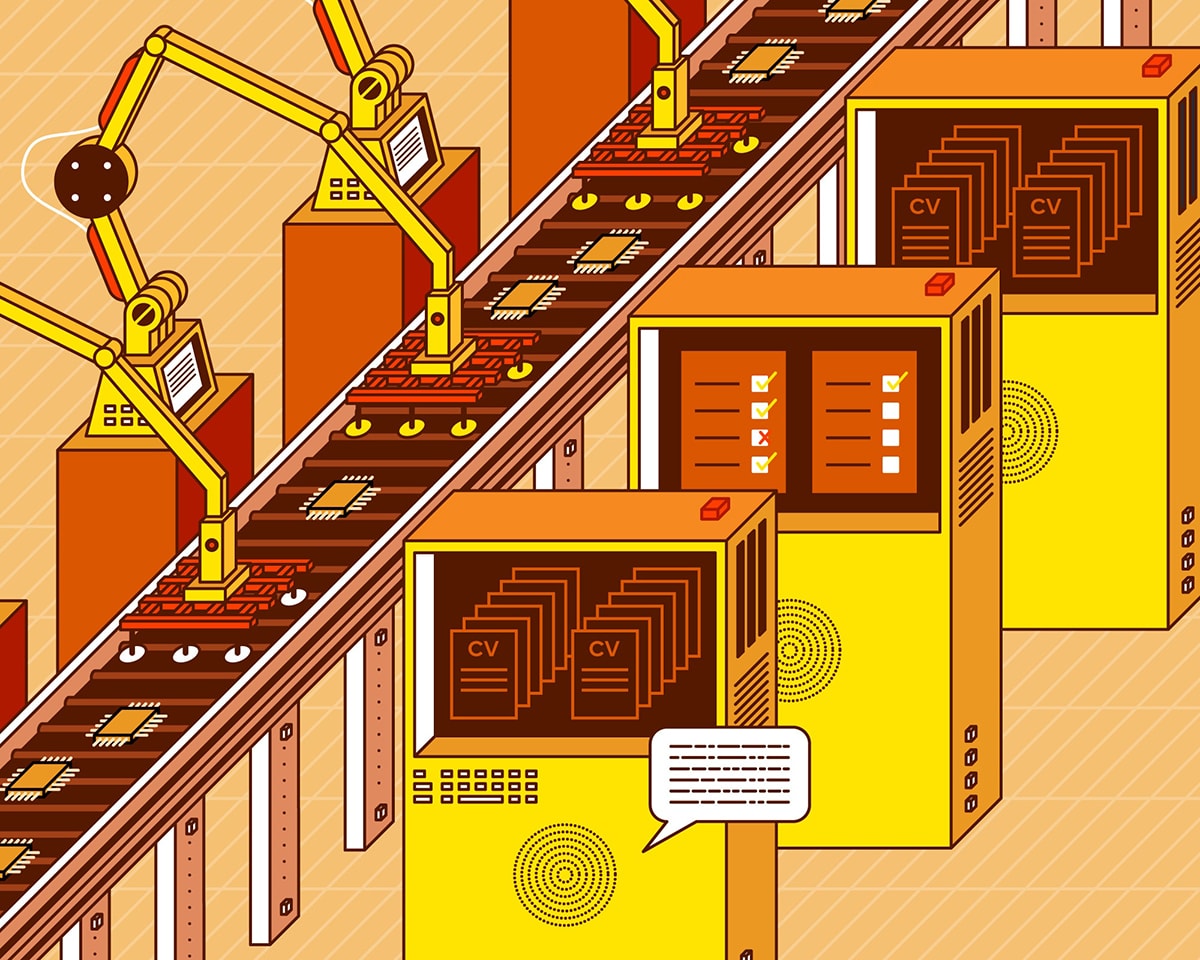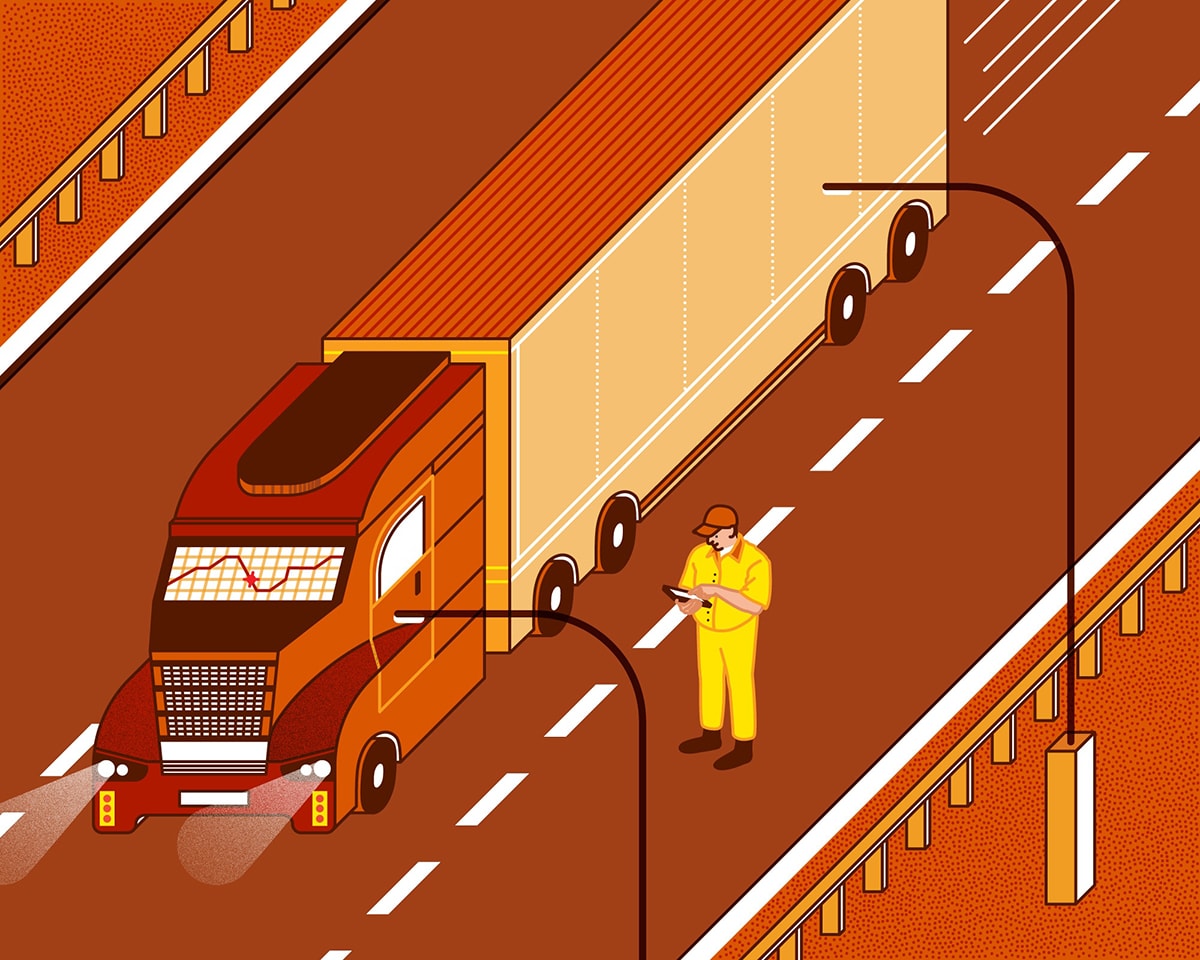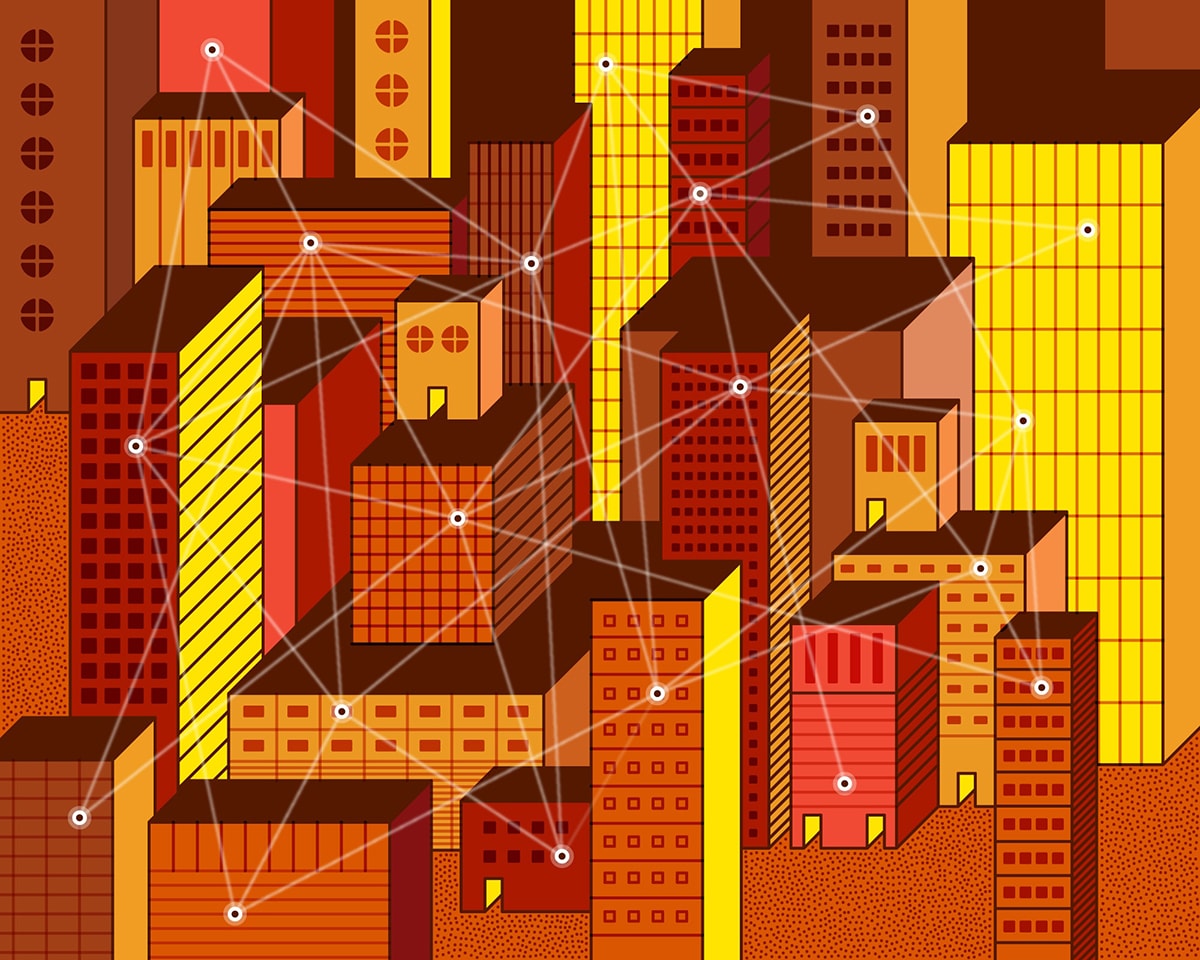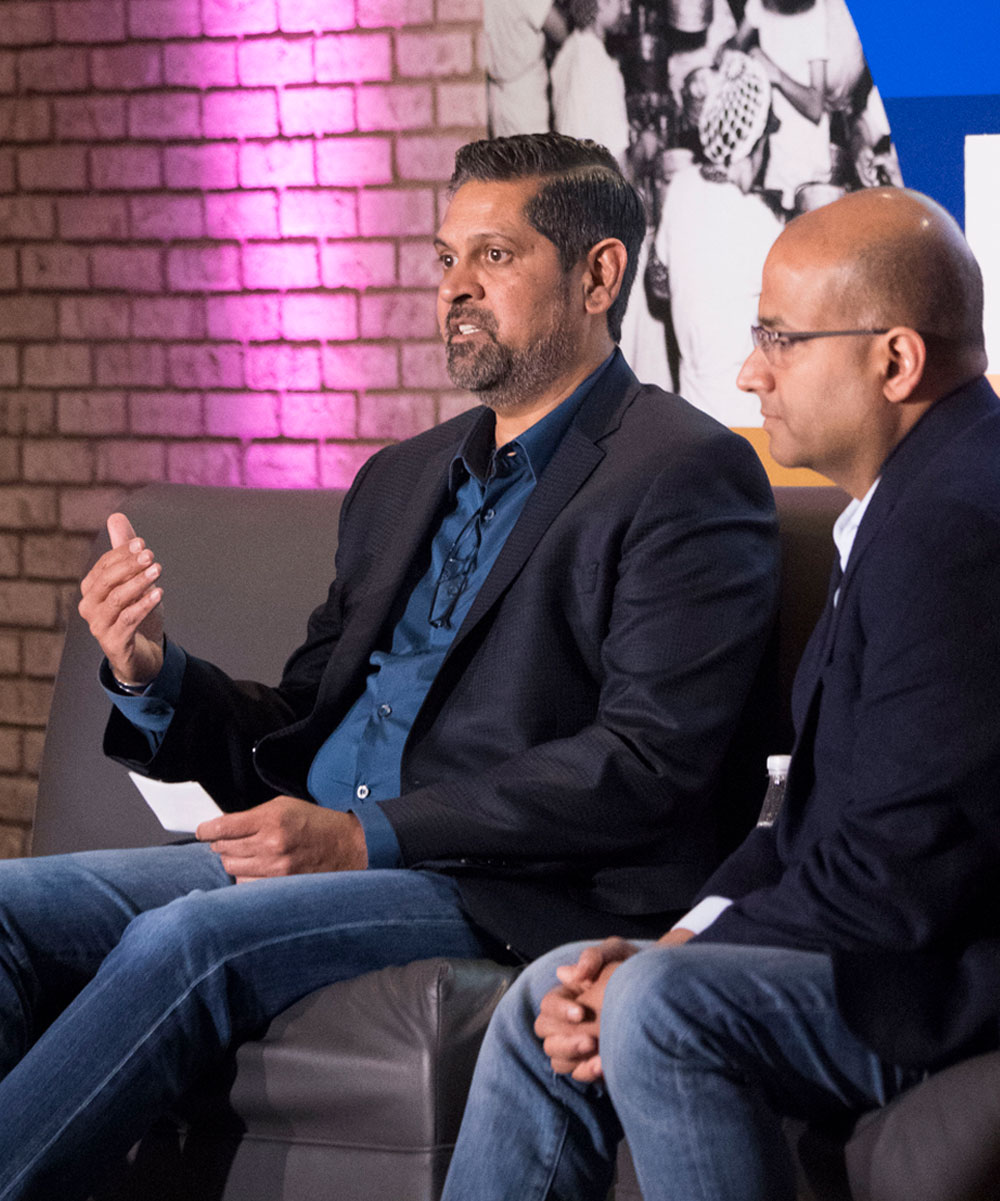Picture an American business, circa 2028. On the factory floor, camera-equipped robots spot and flag defective products as they’re being made. Over in the human resources wing, hiring software zips through hundreds of resumes in minutes, finding talent and even conducting initial job interviews. At the end of the work day, autonomous vehicles transport data scientists and other employees to their homes, while self-driving delivery trucks hit the road to bring finished goods to customers.
This is the transformative promise of artificial intelligence (AI), whose vast array of applications has seized the attention of investors and business leaders, largely because of the technology’s potential to turbo-charge the economy by boosting productivity. This year, venture capital firms invested $4.9 billion in AI ventures in the second quarter 2019, compared with $2.7 billion in the first quarter. A recent PwC survey of more than 1,000 U.S. business executives found that 20 percent now describe the state of intelligent automation and AI at their organization as a “fully optimized” aspect of their business. Some 84 percent said implementing AI “at scale” in their organizations will be necessary in the next three years. The AI market is expected to grow to $70 billion by next year, according to PwC estimates.

Once the stuff of science fiction, AI has already become an essential business tool for everyday use. A new generation of smart machines, which mimic our innate ability to learn how to perform specific tasks, is helping a major online retailer open cashierless supermarkets, and an Ohio insurance company automate its back office billing and accounting tasks. More broadly, AI is forcing legacy industries, from manufacturing to transportation, to rethink everything they do—including how best to structure workplaces where humans must trust and rely on machines like never before.
Even the U.S. Congress—a tradition-bound institution not exactly known for its forward-thinking tech savvy—is getting in on the act. According to a Stanford University analysis, lawmakers on Capitol Hill mentioned AI during more than 70 meetings in 2018, surpassing the combined total mentions for the previous decade. Lawmakers in recent years have introduced bills that would codify federal authority over autonomous vehicle safety, require large companies to audit their AI for bias, and create a federal AI advisory committee.
Yet as individual companies and entire economic sectors adopt and integrate AI, questions abound.
How can firms successfully incorporate AI into their products, services, and workplaces? How can they prepare their employees for change, and train them to work alongside new technologies? What types of tasks are suitable for AI integration, and what types are better off left to humans?
The Atlantic recently gathered innovators, researchers, and business leaders from across industries in New York City to discuss how AI is transforming the way we work. Underwritten by PwC, the conversation explored what’s happening in business right now, and what’s likely to take place in the years to come.
Here are three key takeaways:
AI Must Earn Human Trust To Thrive

Arthur Orduña, chief innovation officer for Avis Budget Group Inc., believes that AI has the potential to “completely transform” the economics of the rental car business—but only if rental companies and customers alike have faith that it works without a glitch.
In the near future, he says, autonomous vehicles could allow his company to operate a fleet of multipurpose cars that are used for urban ride-sharing one day and family vacations the next—hence, spending less time idling on lots and more time generating revenue. Those same rentals also could create “as magical a journey as possible” for customers by increasing safety and reducing driver stress.
But there’s a catch. Orduña’s vision can’t become reality if tomorrow’s smart cars are perceived as unreliable. Earlier this year, as many as 100 Internet-connected luxury automobiles were stolen from a car-sharing service in Chicago. The initial reports said that the thefts were connected to a “hack” of the company’s app.

“AI isn’t a tidal wave that will sweep instantly across continents. It’s going to be a mosaic.”
While the car-sharing service subsequently claimed that the thefts were due to fraud and not hacking, the incident reflected one of the main barriers to widespread adoption of workplace AI: Industries won’t embrace new technologies that they can’t trust.
“The worst-case scenarios today [for smart cars] have been theft and fraud,” Orduña says. “What you don’t want to get into, obviously, is theft of personally-identifiable information of drivers and passengers. And you don’t want outright real-time manipulation of the vehicle, right? Because that would suck.”
To successfully integrate AI into the workplace, businesses must address questions around bias and fairness and acknowledge that there are no absolutes––no AI system can be universally fair or unbiased. But we can design systems to meet specific fairness goals, thus mitigating some of the perceived unfairness and creating a more responsible system overall. This requires business leaders and data scientists to work together since only through such efforts will they be able to build trust in AI, says Anand Rao, PwC’s global artificial intelligence leader. Businesses, he explains, need “to review the nascent AI practices within their companies” and “take steps to address a variety of potential risks so they are creating responsible AI.”
To wit: A 2016 investigation found that popular AI software used by judges and probation officers to assess the risk of recidivism among criminal defendants was biased against African-Americans, who were far more likely than white defendants to be incorrectly judged higher risk.
Likewise, bias can creep into AI applications in the business world when development teams aren’t diverse enough, and incorporate their blind spots into algorithms, executives say. Some 76 percent of executives surveyed by PwC believe that the potential for bias, and a lack of transparency is holding back the implementation of AI in business.
Creating widespread trust in AI also must become a higher priority for companies, Rao says. PwC’s 2019 AI Predictions found that only 37 percent of executives surveyed around the world say that ensuring the trustworthiness of AI is their top priority.
AI Will Change Our Jobs—But Not Eliminate Them

Mention AI, and alarmists are quick to argue that smart robots are coming to take our jobs—perhaps as many as 50 percent of them over the next decade. That doom-and-gloom workplace outlook has Bill Gates proposing a payroll-style tax on work machines, and presidential candidate Andrew Yang calling for a Universal Basic Income to ameliorate the economic and social effects of widespread unemployment.
But are we really facing an employment apocalypse?
Not so, says Kumar Krishnamurthy, a digital productivity principal and IT strategist at PwC. As was the case with previous waves of automation, he says, AI could render some current jobs obsolete—bank tellers, insurance claims adjusters, and truck drivers are prime candidates for disruption—but also bring about new jobs and areas of work.
By 2022, the World Economic Forum predicts, automation will displace 75 million jobs worldwide while creating 133 million new ones. (A PwC report predicts that while roughly 25 percent of U.S. jobs are at risk of being automated by the late 2020s, those losses “are likely to be broadly offset by job gains arising from new technologies.”) Similarly, 38 percent of the executives surveyed by PwC say that AI would lead to increased headcount at their companies—while only 19 percent say it would result in fewer employees.

“As the way of working changes, the big issue is, what happens to your current employee base?...The whole scaling-up agenda needs to be a part of the conversation.”
One example of a new, AI-driven job is skilled data technician, a position that involves sorting and labeling the information fed into algorithms while watching for bias, predicts Colin Parris, vice president of software and analytics at GE Software Research. PwC also predicts job gains in robotics and information technology; in sectors in which new AI technologies boost demand through increasing income and wealth; and in fields that require a human touch, such as health, education, and personal services.
As for existing types of work, Krishnamurthy compared the pending AI transition to the one experienced by the National Basketball Association (NBA) 40 years ago. In 1979, the three-point line was introduced to the game. From this point on, the same players on the court had to change their strategy in order to shoot from longer distances more accurately. The players had to learn new skill sets in order to operate within the new rules of the game. Fast forward to today, the three-pointer has become a critical component of the game.
And that’s the thing [about AI]—it’s not going to reduce the number of people that work,” Krishnamurthy says. “It’s going to require people to retool their skill set.
Examples of the effective use of AI are emerging already. A golf equipment manufacturer already is using AI to make better drivers more quickly. Meanwhile, a London hospital has developed AI technology to help predict which patients are likely to miss appointments, information that could save millions in annual costs.
In the future, Krishnamurthy says, AI likely will serve as on-the-job performance enhancer across a wide range of industries. In chess, AI programs are good enough to defeat the world’s top grandmasters. But humans and AI programs working together are superior to the solo chess programs, with the former providing creative strategy and the latter handling the brute force analysis of umpteen possible moves.
A similar pairing could prove useful in finance, where analysts currently spend lots of time wading through large data sets, poring through legal contracts and emails, and performing other repetitive and mind-numbing tasks.
What if an AI system could automate much of that work, freeing those same analysts to spend more time on thinking and problem-solving, thereby generating more value for their firms?
“AI is going to change the amount of time you spend at work,” Krishnamurthy said. “It’s going to make you more creative. It’s going to change how you work, but that doesn’t mean it’s going to eliminate you.”
To successfully manage that change, says Sanjay Verma, a principal in PwC’s Advisory Technology, Media, Telecommunications Practice, firms will need to communicate with workers about AI and invest in necessary training and reskilling.
“As the way of working changes, the big issue is, what happens to your current employee base?” he asks. “Do you let them go? Or do you really upscale them to the next level, when then can be applied back in[to] the company? The whole scaling-up agenda needs to be a part of the conversation.”
Think Evolution, Not Revolution

In science fiction, the AI-augmented future is nearly indistinguishable from magic: a revolutionary vision of robot doctors providing accurate and instantaneous diagnoses; smart cars saving lives while relieving the stress of rush hour traffic; and automated personal assistants booking dinner reservations while having enough personality to maybe fall in love with.
In our actual workplaces, by contrast, Krishnamurthy doesn’t quite see an AI revolution right now. He thinks of it as more as an evolution with the technology gradually transforming jobs and industries alike.

“AI is going to change the amount of time you spend at work. It’s going to make you more creative. It’s going to change how you work, but that doesn’t mean it’s going to eliminate you.”
“I wish I could get up tomorrow, and be 20 pounds lighter, and run five miles at half the pace I run today,” Krishnamurthy says. “But your muscles have to build up to that. [Business] organizations [adopting AI] are just like that.
“A revolution is when you think [a technology] is ready, and you press a button, and you roll—and we’re not there,” he continues. “It is going to take some muscle memory and applications [of AI] in small areas which are trusted and that will build up over time, with your employee base understanding more and more how you apply it.”
Orduña concurs. Self-driving cars, he believes, will eventually be part of the rental industry. Yet it remains to be seen how sophisticated and commonplace those vehicles become.
“It isn’t a tidal wave that will sweep instantly across continents,” Orduña says. “It’s going to be a mosaic.”
